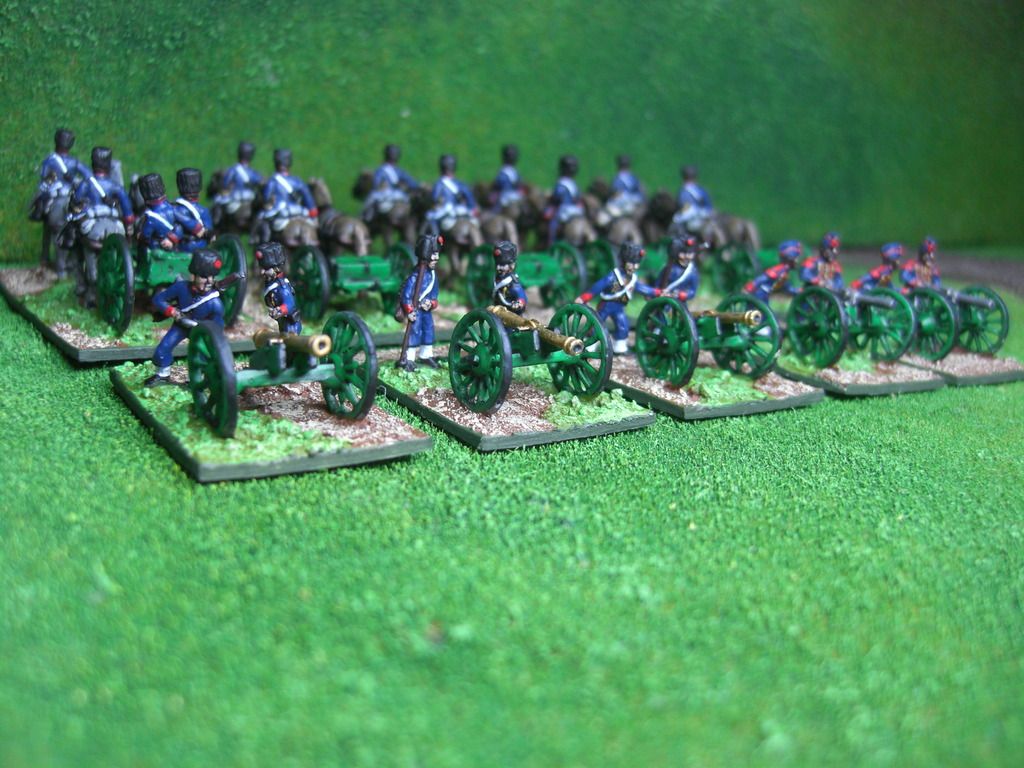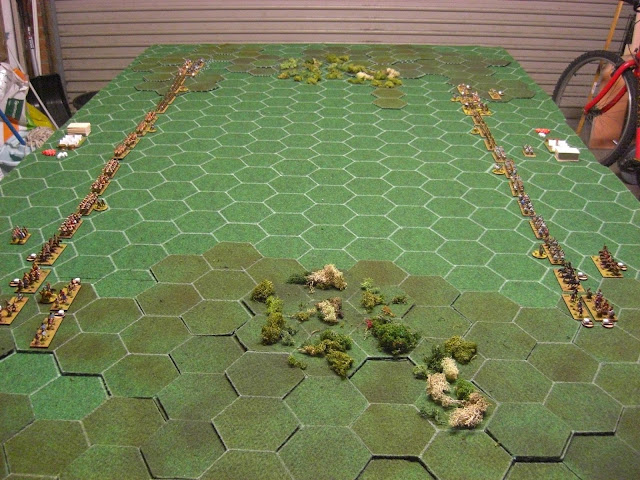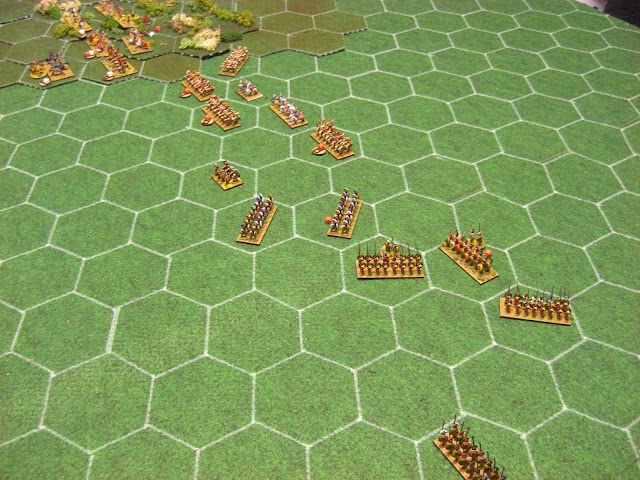Athenian Vs Spartan alliance battle with the Athenians having a few more hoplites but with the Spartans having the edge on quality. The rules as explained in the previous post were 'To the Strongest', 15mm mix of figures on Impetus bases on a hex base table, again explained in the last post.
Movement is card based, four packs are used, two per side. The picture cards are removed and the packs split into red and black. Each side is divided into commands (usually three) with each command completing it's move before moving onto the next command.
Units are activated by drawing a card from the pack, placing it behind the unit in question with initially a standard move needing at least a two to activate. Cards are best drawn for each unit in the command then so long as you don't fail going back to the lowest drawn card behind a unit in that command and attempting to beat it, i.e. a two is the first card, then you will need a three to initiate again and so on till you fail. Difficult moves (turning one hex point left or right or stepping back one hex) requires one card higher again so the three above would therefore need to be at least a four so that moving troops becomes increasingly difficult as you go on. If you fail to initiate a unit all movement ceases for that command and you move on to the next. When all commands have completed their moves/combats the cards are shuffled and the opposition have their turn.
Victory points are calculated to a formula and each side is given an appropriate number of tokens which they discard each time a unit is lost. Run out of tokens an loose the game.
The initial set up with the Spartan alliance on the left (me) and Athenians (
Neal) on the right. Hoplites in the centre lights on the flanks for both sides, in other words a classical setup. Lichen marks rough going, hills give height advantage and block line of sight.
1st move by me and the Theban tossers decide prudence is best and turn over an ace for their command, a two is the minimum required, troops move one extra hex while out of charge reach of enemy (not in rough terrain), there is a command radius of two hexes so be careful where you place your leaders.
This picture shows the cards behind the units on the Spartan left flank command, I wanted to activate the Skythian horse archers (centre of the picture) to enable them to fire on the hoplites to their front. As can be seen they drew a four on the first turn of the cards while the other units turned higher cards, I therefore attempted to activate them again as they would only have required at least a five to fire, unfortunately another four was pulled out meaning that that commands moves were at an end. The small dice donate the number of missile ammunition each unit has.
The Spartan lights on the opposite flank with cavalry pushed forward.
A general view of the action with both Neals Athenian flanks (lights with hoplite support) advancing and his centre holding back.
On the Athenian right the advancing hoplites find themselves isolated when the Thebans opposite finally surge forward but the fight is still very much in the balance as the Athenian light troops are pressing hard through the rough ground to their front with a cavalry unit even swinging wide round the Theban left flank. The red dice marks one casualty to the unit, two casualties and the unit is removed, though you can rally them off.
The flanking move.
On the opposite flank Neal's Athenian hoplites supported by their light troops smash into their lighter opponents driving them off the ridge they were defending and driving them back towards the Spartan encampment. This Spartan command was almost completely destroyed by this attack, but as we shall see the Athenian hoplites pursued their opponents too far and should have turned inwards to roll up the Spartan centre.
A general view of the field at this point shows the Athenian left victorious and their right holding it's own. It was in the centre however that the battle would be finally decided. Red casualty markers are starting to appear - even on my veteran Spartan hopilites (which was a bit worrying) but rallying them off the Spartans began to fight back.
Destroying one Spartan hoplite unit the Athenian hoplites are forced to advance into the vacant hex, the remaining Spartans now sit on the Athenian flanks thereby effectively attacking twice each (drawing two cards for a flanking attack).
End game, with his centre collapsing Neal's Athenians finally ran out of victory tokens. I pulled it out of the bag with only two remaining myself. If only the Athenian hoplites on their right had turned inwards - 'Oh dear, how sad, never mind'!
Oddly enough Simon Miller is doing a BATRAP of a similar 'To the Strongest' game he is playing at the moment. His blog and link to his ruleset can be found
here. Do have a look it's a great blog and as stated the rules suit Neal and myself to a tee.
Thanks for looking.
Dave.

























